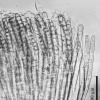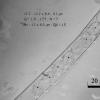
12-01-2026 05:24
 Danny Newman
Danny Newman
Cyathicula coronata on Urtica dioicaCataloochee Di

15-12-2025 11:49
 Danny Newman
Danny Newman
ITS sequences from the following two collections B

11-01-2026 20:35
Hello.A very tiny pyrenomycete sprouting sparsely

09-01-2026 17:41
Arnold BüschlenHallo, F. dilatata wird von vielen Bryoparasiten

10-01-2026 20:00
Tom SchrierHi all,We found picnidia on Protoparmeliopsis mur

07-01-2026 22:22
 Danny Newman
Danny Newman
Tatraea sp. on indet. hardwood The Swag, Great Sm

10-01-2026 01:18
 Danny Newman
Danny Newman
cf. Neovaginatispora fuckelii on indet. shrub Pre

07-01-2026 10:24
 Danny Newman
Danny Newman
Pezicula sp. on indet. hardwood Appalachian Highl

09-01-2026 10:08
 Blasco Rafael
Blasco Rafael
Hola, en el mismo habitat que la anteriorRetamaDia

08-01-2026 21:22
 Blasco Rafael
Blasco Rafael
Hola, He recogido esta muestra de Orbilia sobre Re
 Hi,
Hi,I am new to this site, so please forgive any mistakes.
I think this fungus is Peziza cerea.
Is that correct?
Best wishes,
Martin

Hi Martin,
bienvenue sur le forum Ascofrance !
If you follow Hansen & al. 2002 , P. cerea is synonymous to P. varia.
I wonder whether the measured spores are mature as they are still in the ascus , which may explain they are shorter as they should be for P. varia
Amitiés
Michel

Amitiés
Martin

The Piximetre data is as follows (Classical formula, 80% of measurements):
(13.8) 14.7 - 15.9 (17) x (7.8) 9.2 - 10.6 (10.9) µm
Q = (1.4) 1.43 - 1.7 (1.9) ; N = 50
Me = 15.3 x 10 µm ; Qe = 1.5
From that can we say it is definitely Peziza varia (= cerea)?
Best wishes,
Martin

Martin, these measurements actually match P. varia's, to my knowledge.
In many collections, fortoulism in paraphyses can be observed in P. varia, but this character (which I cannot observe on your pics ) is not compulsery
Amitiés
Michel






